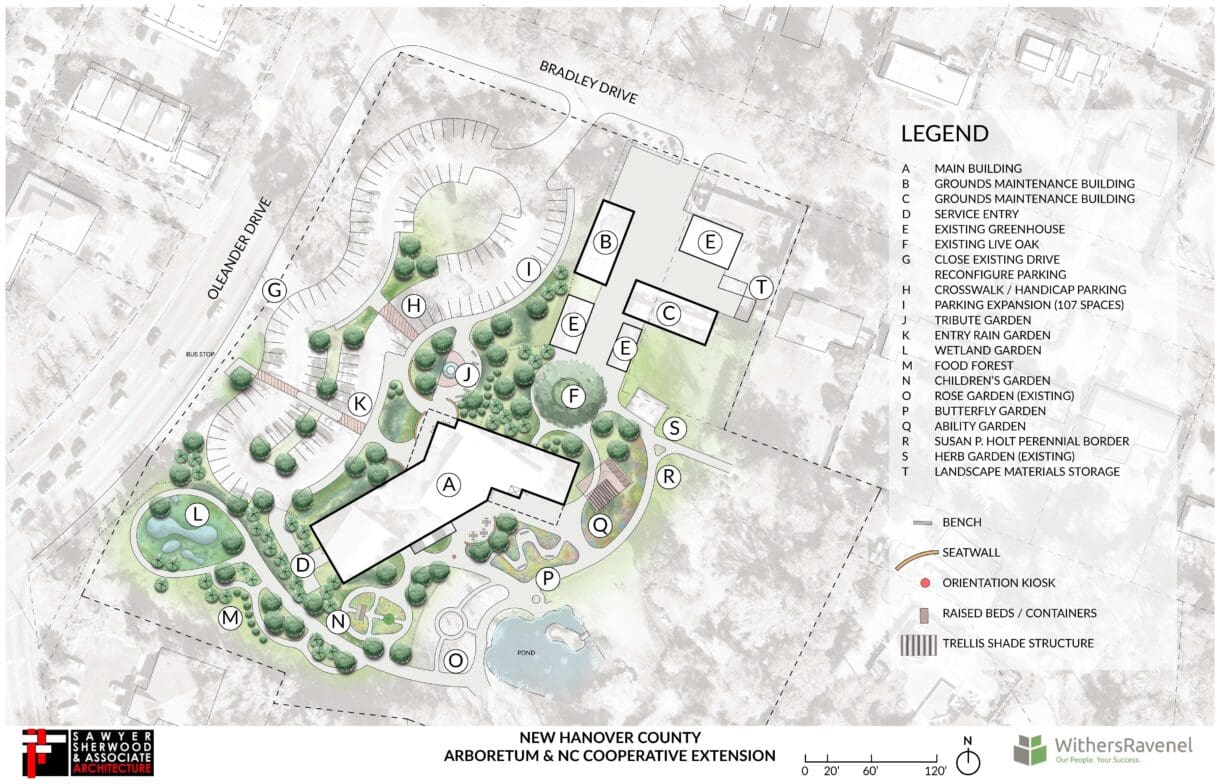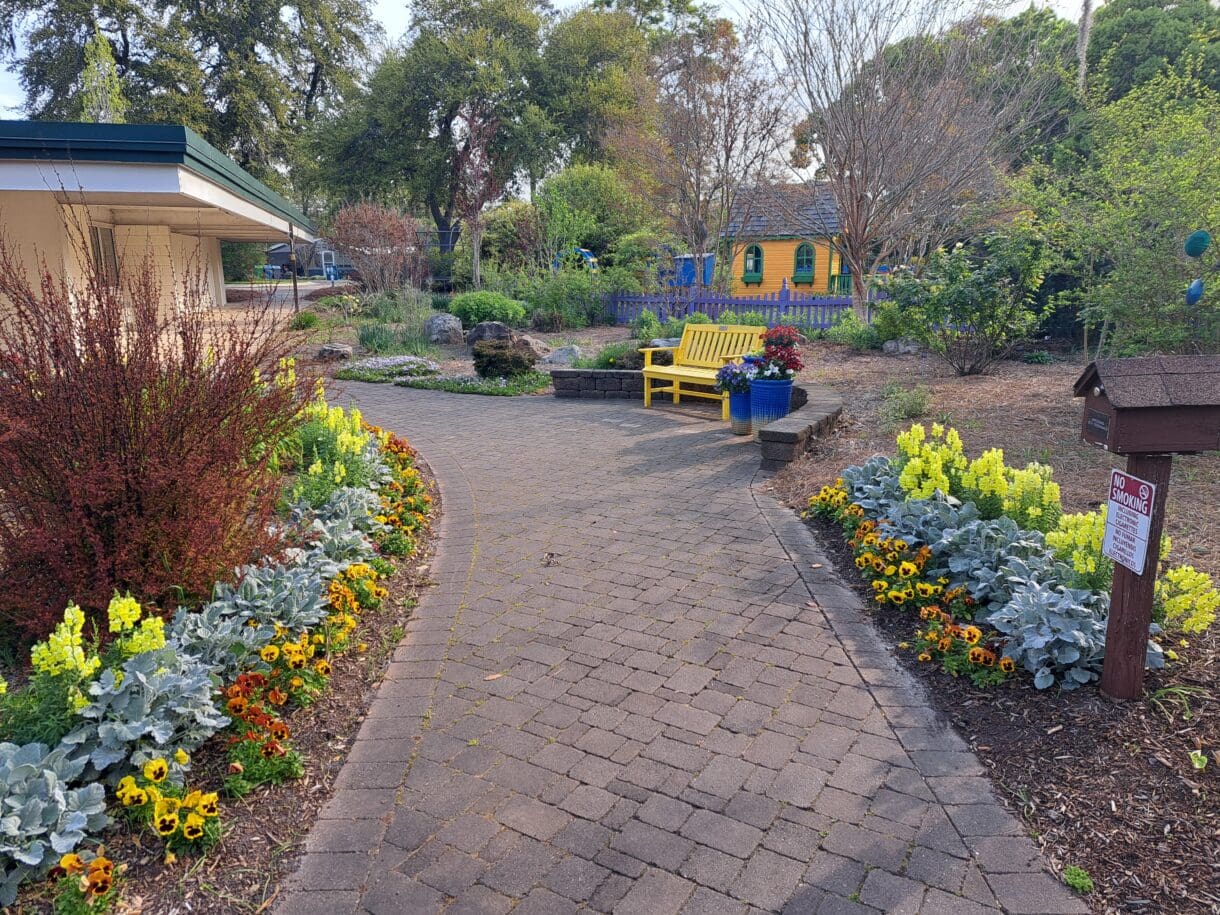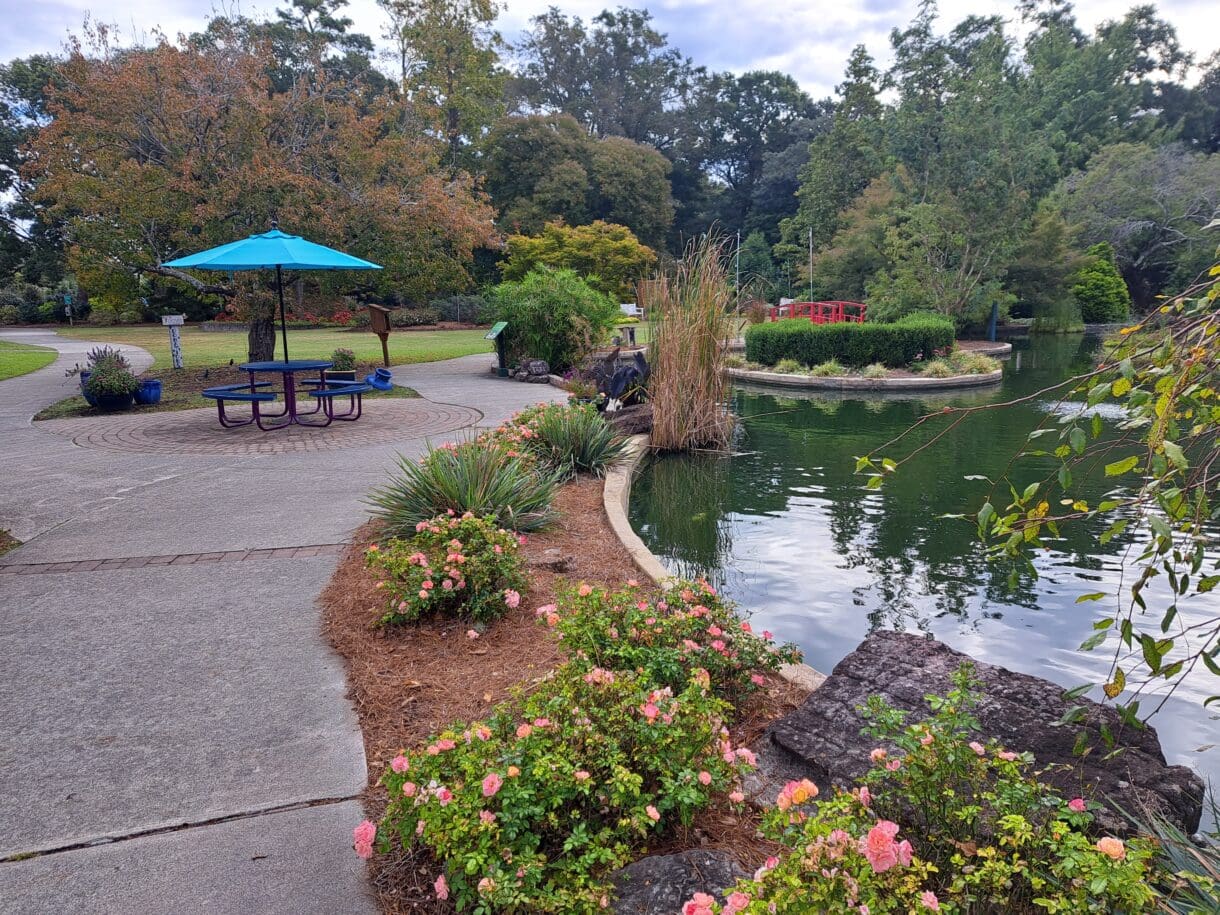The New Hanover County Arboretum is at once a horticultural laboratory and beautiful public garden. Since the late 1980s, it has been home to the NC Cooperative Extension Service, providing services to the community with plant clinics and educational opportunities. Several acres of gardens are open to the community, including Japanese, Rose, Meditation, Children’s, Butterfly, Native Plant and many other gardens. There is also a central pond and lawn. A dedicated group of volunteers, master gardeners, and staff keep up the grounds and gardens. These groups also conduct programs, clinics, plant sales and other events. Prior to the establishment of the arboretum the property was home to Bradley Creek Elementary School built in 1942. The school burned in 1982.
Arboretum Master Plan
In collaboration with Sawyer Sherwood Associates of Wilmington, WithersRavenel prepared a master plan for future development of the property. The master plan revolves around a new center for the arboretum and consolidates all facilities under one roof. This will become the entrance to the gardens. The new building will house a visitor’s center, café, NC Cooperative Extension offices, education, and event spaces. It will also incorporate green roofs and a rooftop terrace overlooking the gardens. Also planned are two other buildings for maintenance.
Plans for New Gardens
In conjunction with the new center, several garden spaces will be reinvented, and new gardens introduced. Reinvented gardens include the Children’s, Tribute, Ability, Welcome and Native Plant gardens. New gardens will include the Wetlands Garden and Food Forest. The Wetlands Garden will include local, native and wetland plants and be part of an improved stormwater management system.
In addition to reinventing garden spaces improvements will also be made to parking, circulation, accessibility and sustainable stormwater management facilities.
Master Plan Vision
The vision illustrated by the master plan, design of garden spaces, pathways, associated amenities, and other improvements will create a new sense of arrival and entry experience, strengthen the connection between the new center and gardens, improve accessibility, support educational and therapeutic programs and demonstrate sustainable solutions and strategies. The balance between the arboretum as a public garden and horticultural laboratory make it a unique place and special to the community.






